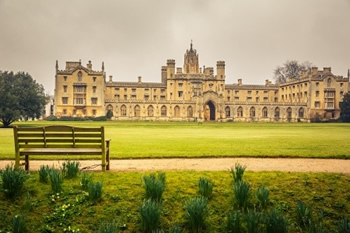University placement
Independent schools have an excellent track record of getting students into universities.
 Most parents want the best education possible for their child, and that usually results in a university placement
after secondary school has been completed. As such, it is useful for parents to know what track record their child's
school has for getting their students into universities, and what they are able to do to help.
Most parents want the best education possible for their child, and that usually results in a university placement
after secondary school has been completed. As such, it is useful for parents to know what track record their child's
school has for getting their students into universities, and what they are able to do to help.
Statistics
In the UK, around 91 per cent of independent school students who apply to a university place get accepted. Due to
the fairly varied nature of the independent sector this can differ quite a lot from school to school, so it is an
area that requires research.
It is worth noting that if you are hoping for your child to end up at Oxford or Cambridge University, an
independent school might be the right choice. Independent school students made up 37.2 per cent of Oxford's
applicants, but 43.2 per cent of its total acceptances, meaning independent school students had a better chance
of being accepted.
Similarly, independent school students had a 33.7 per cent success rate when applying to Cambridge University. The
success rate for non-independent schools was 27.1 per cent, giving independent school students another clear
advantage.
Finding information
Most schools will have some kind of information about their university admissions rate on their website, or in the
school's prospectus. It will usually be there somewhere, so have a good look if you can't find it right away. In
addition, if you have a particular university you want your child to attend, it is worth looking up their statistics
to see how many independent students usually get accepted.
There are a few things to bear in mind when looking into details about the university placement record of your
child's potential schools. You might find a statistic about acceptance rates, but it is worth bearing in mind that
this does not necessarily apply to a child's first choice.
When students apply for university places, they will typically choose five courses with a variety of offers.
This means if they do not get a place on their preferred course, they might have more success with their second,
third, fourth or fifth choice.
After this, there is a 'clearing' process, where students who did not get onto any of their chosen courses can
apply at the last minute to universities with free places on similar courses. All of these count towards the overall
university admissions rate of a school.
When you are looking for the university acceptance rate of potential schools, keep an eye out for statistics
about the number of students who manage to get onto their first choice of course. If this statistic is high, it
should indicate a good choice of school.
Sources
http://www.ox.ac.uk/about_the_university/facts_and_figures/undergraduate_admissions_statistics/school_type.html
http://www.study.cam.ac.uk/undergraduate/publications/docs/admissionsstatistics2012.pdf
http://www.isc.co.uk/research